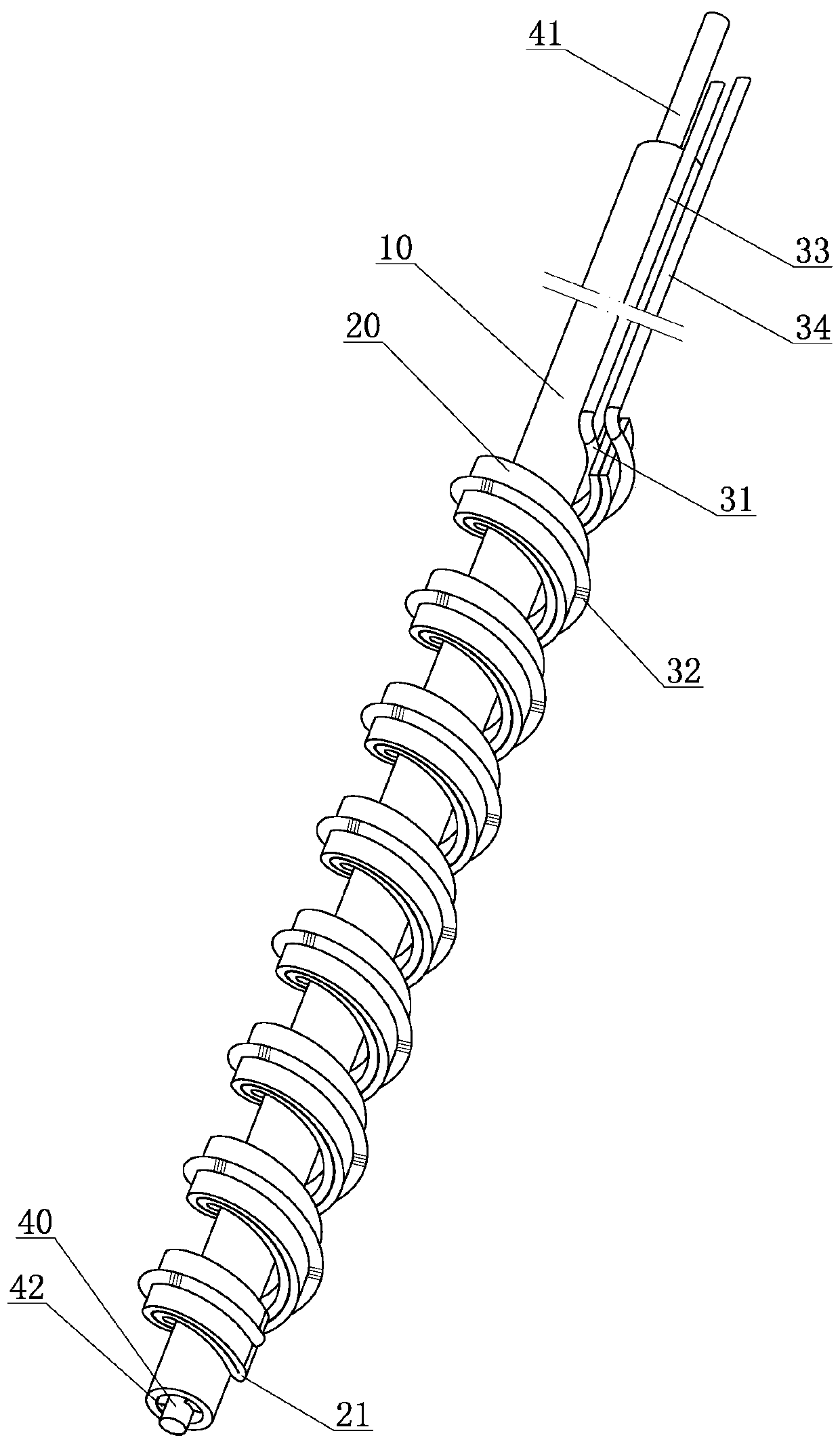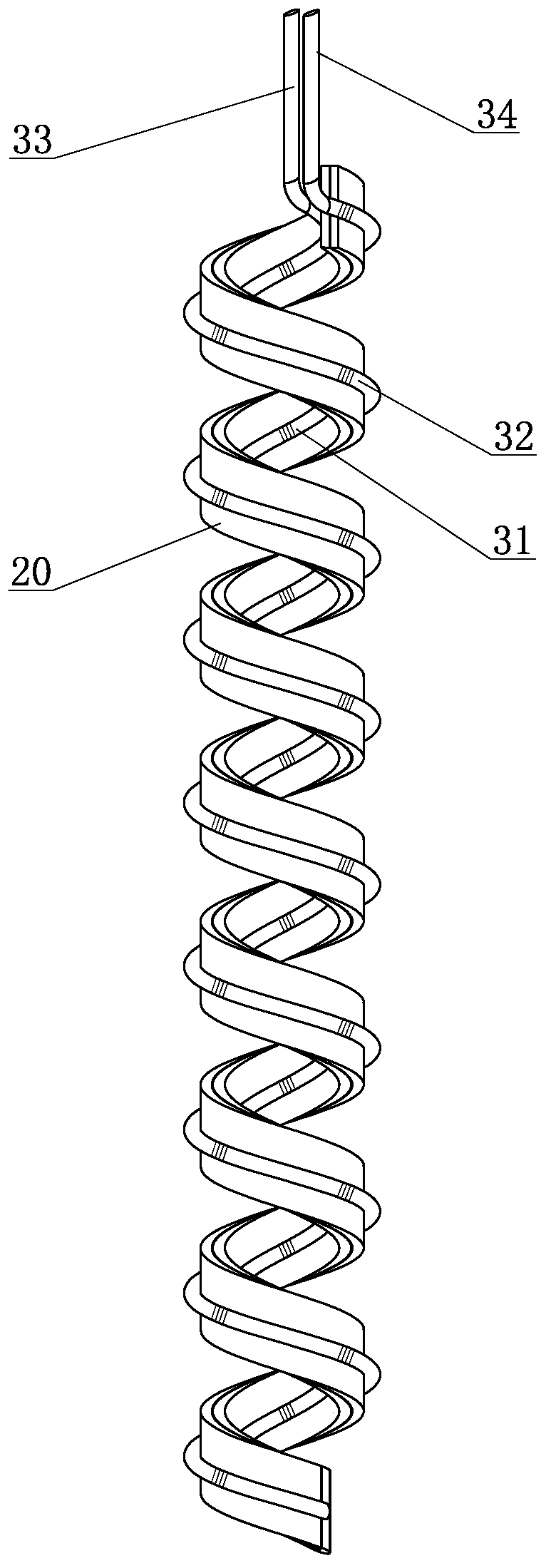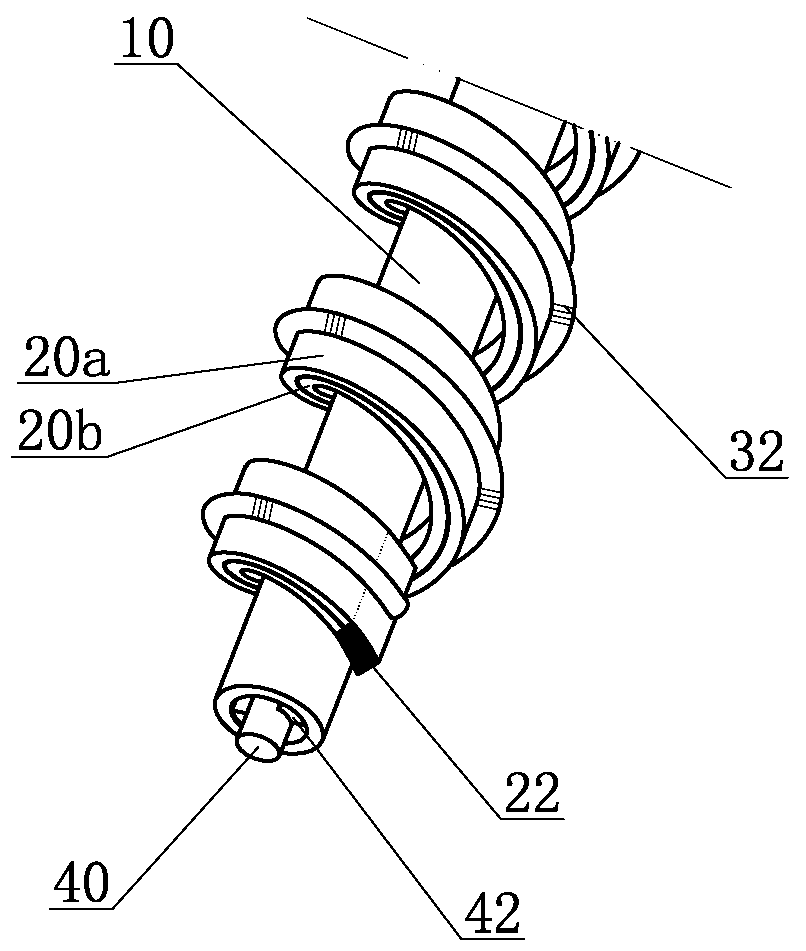Radiofrequency ablation micro-catheter
A technology of radiofrequency ablation and microcatheter, applied in the direction of heating surgical instruments, etc., can solve the problems of insufficient heating time, increased treatment risk, long heating time, etc., to avoid sudden changes in voltage or current, improve detection and control functions, and improve treatment effect of effect
- Summary
- Abstract
- Description
- Claims
- Application Information
AI Technical Summary
Problems solved by technology
Method used
Image
Examples
Embodiment 1
[0041] Such as Figure 1 to Figure 4 , a closed microcatheter for radiofrequency ablation, comprising a catheter 10 on which a heating resistor 20 is wound.
[0042] The catheter is a polymer material catheter, the outer diameter of the catheter is d=1.0mm, and the wall thickness of the catheter is S=0.15mm.
[0043] The heating resistor is a sheet heating resistor. There are two layers of sheet heating resistors laminated inside and outside to form a double layer of sheet heating resistors. figure 1 shown. Likewise, the double-layer chip heating resistor can be welded 22 at the front end, which can also achieve the same effect, such as image 3shown. The double-layer chip heating resistor is helically wound along the conduit to form a single-circuit chip heating resistor. The thickness of the heating resistor is K=0.15mm, and the material of the heating resistor is an alloy with a resistance value of 120 ohms to 300 ohms per meter. In this embodiment, an alloy with a FeCr...
Embodiment 2
[0060] Such as Figure 6 , Figure 7 , a closure microcatheter for radiofrequency ablation. This embodiment is an improvement of the first embodiment.
[0061] In this embodiment, an insulating sleeve 70 is provided between the double-layer sheet heating resistors. The thickness of the insulating sleeve K=0.1mm. The insulating sleeve can use polymer materials such as PEEK polyether ether ketone or PI (polyimide) with high temperature resistance and high voltage resistance. The insulating sleeve in this embodiment is made of PEEK polyetheretherketone.
[0062] The insulating sleeve can reliably avoid the interlayer short circuit of the double-layer chip heating resistor.
[0063] Another important aspect of the insulating sleeve is that it can increase structural rigidity and facilitate surgical operations.
Embodiment 3
[0065] Such as image 3 , a closure microcatheter for radiofrequency ablation. This embodiment is an improvement of the first embodiment.
[0066] In this embodiment, the heating resistor is a double-layer sheet heating resistor welded at the front end, and the material of the outer layer sheet heating resistor 20a of the double-layer sheet heating resistor is an alloy with a resistance value per meter of 120 ohms to 300 ohms. The inner layer of the double-layer chip heating resistor 20b is made of stainless steel.
[0067] According to the structure of the inner and outer sheet heating resistors of the radiofrequency ablation catheter, in view of the fact that the outer sheet heating resistors directly contact the object to be heated, and also according to the circuit series principle, the resistor with a large resistance value in the series circuit consumes a large amount of power ( It is suitable for both current source type RF signal generators and voltage source type RF...
PUM
 Login to View More
Login to View More Abstract
Description
Claims
Application Information
 Login to View More
Login to View More - R&D
- Intellectual Property
- Life Sciences
- Materials
- Tech Scout
- Unparalleled Data Quality
- Higher Quality Content
- 60% Fewer Hallucinations
Browse by: Latest US Patents, China's latest patents, Technical Efficacy Thesaurus, Application Domain, Technology Topic, Popular Technical Reports.
© 2025 PatSnap. All rights reserved.Legal|Privacy policy|Modern Slavery Act Transparency Statement|Sitemap|About US| Contact US: help@patsnap.com



